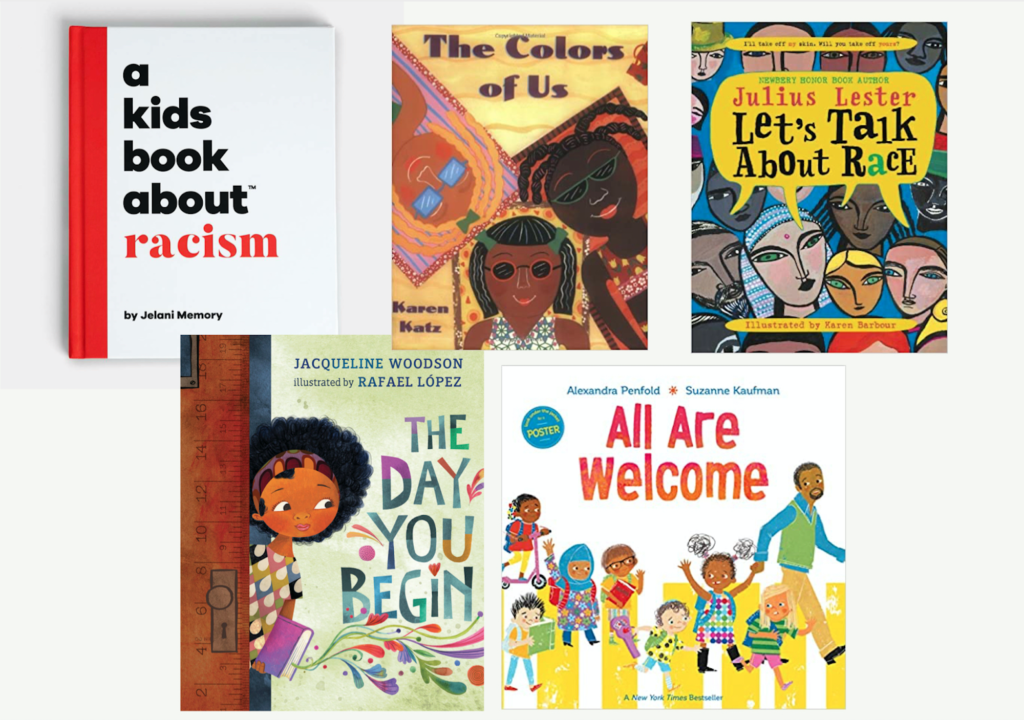
Culturally Responsive Classrooms: Where to Start
As people have taken to the streets lately to demand equality, I have watched, reflected, and dialogued with loved ones asking the question, “How am I advocating for equity in my own spheres of influence?” Educators are in such a special and powerful position to impact the next generation. I am eager to examine, reflect, and change how I teach so that I can create a culturally inclusive classroom. I invite you to be part of the process.
What is Culturally Responsive Teaching?
Twenty-five years ago Gloria Ladson-Billings developed the theory of culturally relevant pedagogy. Her theory was built on the cornerstone that schools should be places where meaningful relationships are developed, social justice is valued, and students’ cultures are honored (McCarther & Davis, 2017, p. 103). Ladson-Billings wanted to prove that students of color could be just as successful with the right teaching. She set out determined to discover best practices to educate students with various cultural backgrounds and abilities (McCarther & Davis, 2017, p. 105).
Culturally responsive teaching is focused on mimicking students’ cultural learning styles and tools. Zaretta Hammond (2015) explains it further by stating “Culturally responsive teaching leverages the brain’s memory systems and information processing structures”. One example of a cultural learning style is oral traditions. A lot of cultures, such as African American, Latino, Southeast Asian, and Pacific Islander, have strong oral cultures. Their primary ways of knowledge transfer and meaning-making is based on interacting with the information in a social, active, and oral way (Hammond, 2015). Therefore, we can tap into these cultural learning styles to help our students with diverse backgrounds make-meaning of the content in ways that will stick.
So how can we create culturally responsive classrooms so that we can engage students from diverse backgrounds?

1. Identify Your Implicit Biases
Implicit bias is “our unconscious attitudes and stereotypes that affect our decisions” (MacLeod-Bluver, 2019). Implicit biases directly influence our instructional practices and relationships with students, but also impact more simple things like what books we put in our classroom libraries, how we decorate our classrooms, and our assessment of students. Even the most heartfelt and progressive educators need to take time to reflect on their own biases if they want to create a culturally responsive classroom. One tool that teachers can use to examine their own implicit biases is the bias test from Harvard’s Project Implicit. Once we are aware and take ownership of our personal biases we can begin to fight them. If you think this does not apply to you, “Scientific research has demonstrated that biases thought to be absent or extinguished remain as “mental residue” in most of us” (Teaching Tolerance). We all have room for improvement. I recently saw a post from Ijeoma Oluo on social media that really resonated with me.
“The beauty of anti-racism is that you don’t have to pretend to be free of racism to be an anti-racist. Anti-racism is the commitment to fight racism wherever you find it, including in yourself. And it’s the only way forward.”
Ijeoma Oluo, @IjeomaOluo
MacLeod-Bluver (2019), suggests another way that you can reflect on your implicit bias and join the discussion for equity is by starting a book study with other teachers at your school or people in your community. One book suggestion is White Fragility by Robin D’Angelo or check out this article: White Privilege: Unpacking the Invisible Backpack, by Peggy McIntosh. Another good discussion starter is PBS’s Race: The Power of Illusion webpage.
2. Critically Examine our Curriculum and Instructional Practices
Here are some guiding questions to ask while carefully examining your curriculum: “How does this curriculum reflect the diverse range of students in my classroom and the diversity of human experience? How does this curriculum support students as sense-makers?” (MacLeod-Bluver, 2019). For a long time, curriculums were written by white males for a white audience. We need to challenge the status-quo and demand that publishers are integrating inclusive content.
As for instructional practices, research has shown some alarming trends. One being that non-Black teachers have significantly lower expectations of Black students (Gerhenson, Holt, & Papageorge, 2015). Studies have also shown clear discipline disparities between white and non-white students. When establishing classroom norms and expectations at the beginning of the year, ask yourself if your classroom management policies reflect your values of equity (MacLeod-Bluver, 2019). Take time to video yourself teaching and reflect on your language – do you talk the same to students of color as you do white students? Does your language honor each student’s potential? Does your language support all students’ making sense of the content? (MacLeod-Bluver, 2019).
3. Actively Educate Our Youth
Beyond examining our curriculum, we should be creating safe places to have intentional conversations with our students about topics like race, culture, feelings, and equity. Biases are learned at an early age. Teachers can “help children question their values and beliefs and point out subtle stereotypes used by peers and in the media” (Teaching Tolerance). Here are some children’s literature books that focus on the issues of race, culture, and equality.

Or check out these Social Emotional Lessons that support kids to start having conversations about complex issues. Teaching Tolerance has explicit lessons about identity, diversity, justice, and action, but they also incorporate these topics into lessons focused on common core standards.
4. Include Culturally Responsive Pedagogy to your Teaching
Zaretta Hammond (2015) gives 3 tips on how to make any lesson more culturally responsive.
5. Build an Inclusive Classroom Environment
We need to surround our students with cues that equality matters – have bulletin boards with multiple ethnicities, library books featuring children of different races, and math word problems with multi-ethnic names. When setting up your classroom ask, “How am I creating inclusive spaces in my room that honor each student that walks through the door?” (MacLeod-Bluver, 2019). Take the time to get to know each of your students at the beginning of the year and learn how to pronounce their names correctly. Discover what they love and dislike, what motivates them, and more about their family’s culture. Take the time to have classroom discussions where students can share ways they prefer to learn and interact with each other.
It can feel overwhelming when trying to determine how to create a culturally responsive classroom. I hope this blog post has given you some helpful tips and practical steps on getting started. How have you developed meaningful relationships, taught your students about social justice, and honored students’ diverse cultures in your classroom?
Resources
Hammond, Z. (2015, April 1). 3 Tips to Make Any Lesson More Culturally Responsive. Cult of Pedagogy. https://www.cultofpedagogy.com/culturally-responsive-teaching-strategies/
MacLeod-Bluver, C. (2019, December 10). Understanding Our Own Implicit Bias: 5 Tips to Becoming a More Reflective Educator. BetterLesson. https://blog.betterlesson.com/understanding-our-own-implicit-bias-5-tips-to-becoming-a-more-reflective-educator
McCarther, S. M. & Davis, D. M. (2017). Culturally Relevant Pedagogy Twenty-Plus Years Later: How an Arts Approach to Teaching and Learning Can Keep the Dream Alive. American Educational History Journal, V44(2), pages 103-113. https://drive.google.com/file/d/1PHEzEEtwke-01-ZV34RjN-oJ_ILR90H4/view
Project Implicit. (n.d.). https://implicit.harvard.edu/implicit/
Rucker, N. W. (2019, December 10). Getting Started With Culturally Responsive Teaching. Edutopia. https://www.edutopia.org/article/getting-started-culturally-responsive-teaching
Teaching Tolerance. (n.d.). Test Yourself for hidden Bias. Teaching Tolerance. https://www.tolerance.org/professional-development/test-yourself-for-hidden-bias
Header Photo: People vector created by pikisuperstar – www.freepik.com



4 Comments
Megan H
Thanks so much for sharing this. Such an important topic and one that can’t be stressed enough. I enjoyed your post that you made using MySimpleshow, what a great way to enhance your post. Have you used many of Teaching Tolerance’s resources in your classroom? The quote you shared from Ijeoma Oluo also resonated with me. I really enjoyed her book, So You Want To Talk About Race and have really been working on being anti-racist and bringing that work into coaching.
Rachel
Thank you for you post! I think you have beautifully addressed a topic that is so important for people to be talking about. The tips you shared about how to make lessons more culturally responsive were very straightforward and easy to implement. I love the idea of gamifying lessons and I think it’s so awesome that it ties so well into culturally responsive teaching. I too am looking for more ways to be inclusive in my classroom. I appreciate what you have shared here and have some great resources to use for this school year!
Doug
Thanks for sharing! Lots of good stuff here! I especially like “storify” as a verb for creating a learning story. So important and true! As far as implicit bias goes, I am reminded of a National Science Teachers Association presentation that I attended on creating more opportunities for equitable learning in STEM classrooms. One of the things that the presenter shared was that “if you have a brain then you have a bias”, which stuck with me. She spoke of what you shared regarding the importance of recognizing bias so that we can actively work to counter it. Thanks again for sharing these great insights!
Straume
“Culturally responsive teaching is focused on mimicking students’ cultural learning styles and tools.” What a great way to simplify the dense ideals of culturally responsive teaching! I love that you wrote this in a way that is so incredibly easy to understand and identify with.
Thank you for your insight and evaluation with this post. I especially appreciate the piece about the ways in which you can make your lessons more culturally responsive. Gamification is such a great way to add to the audience of lessons and help all students access the social interaction strategies and cues necessary to participate.
Fantastic post!